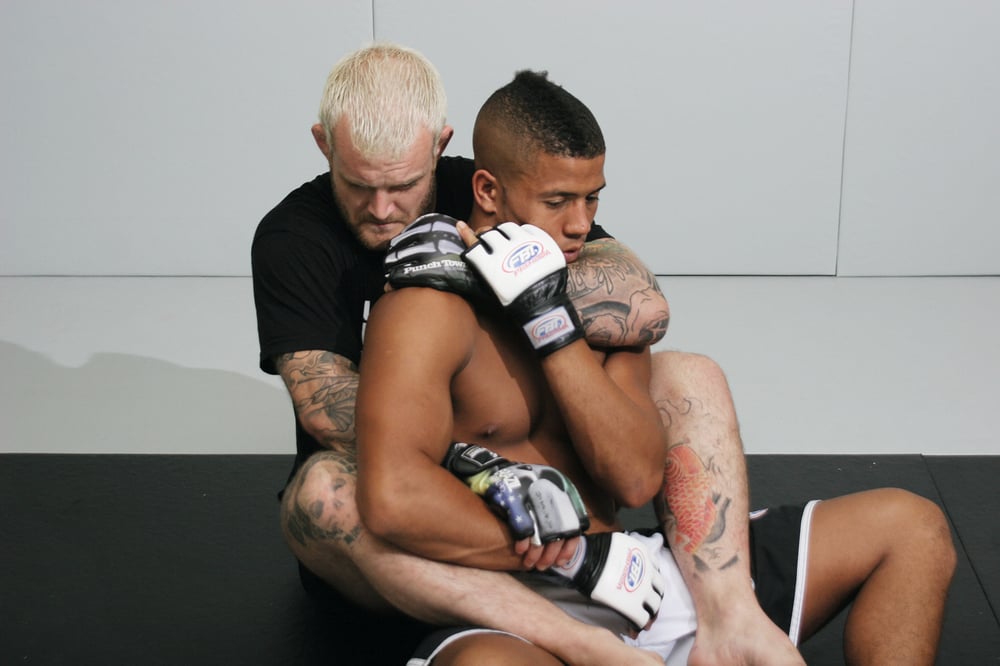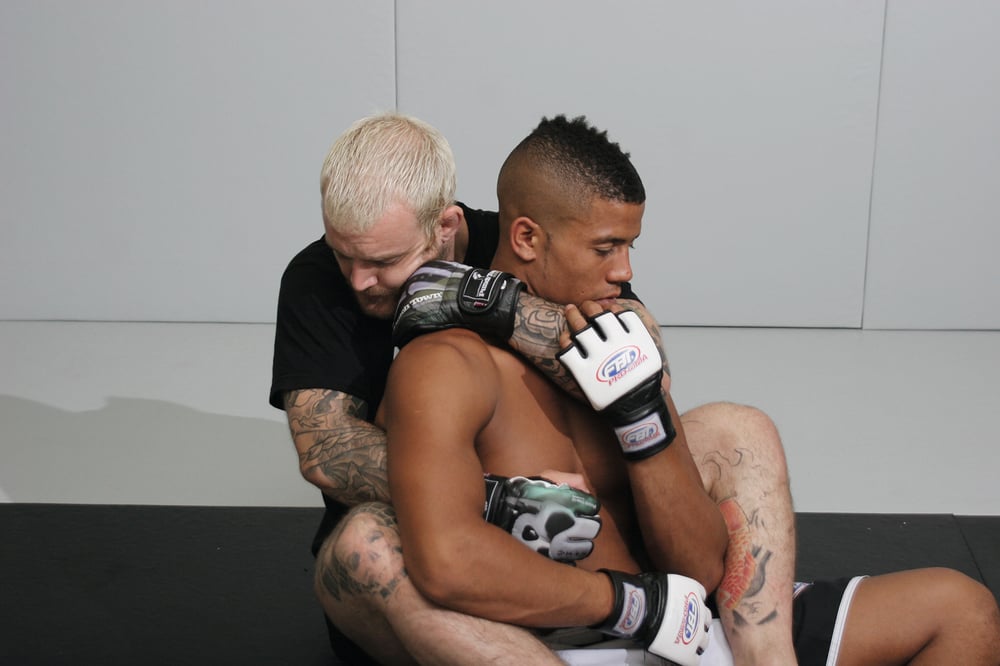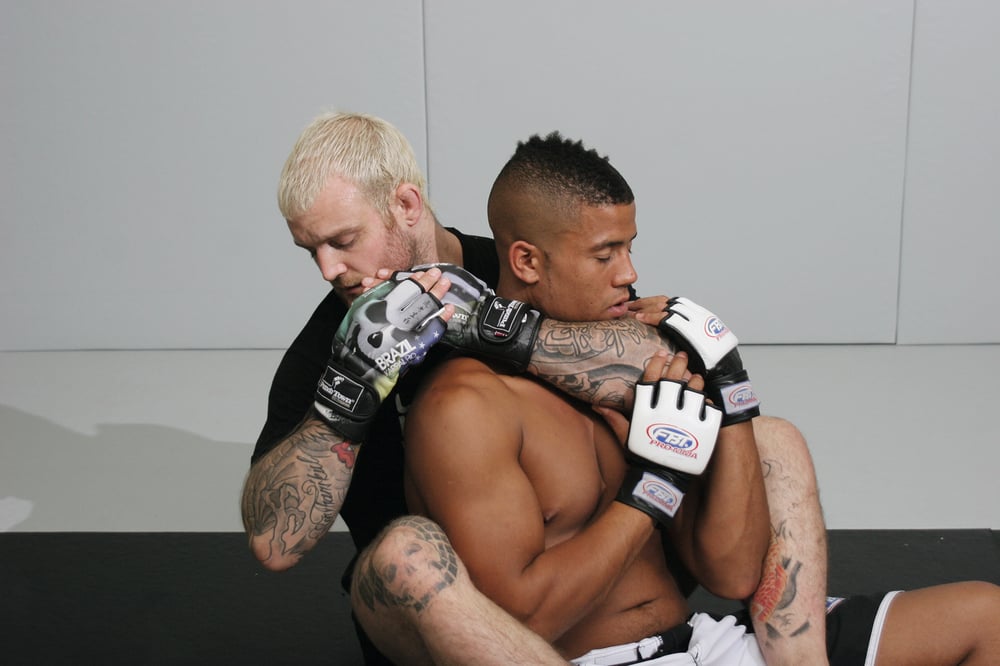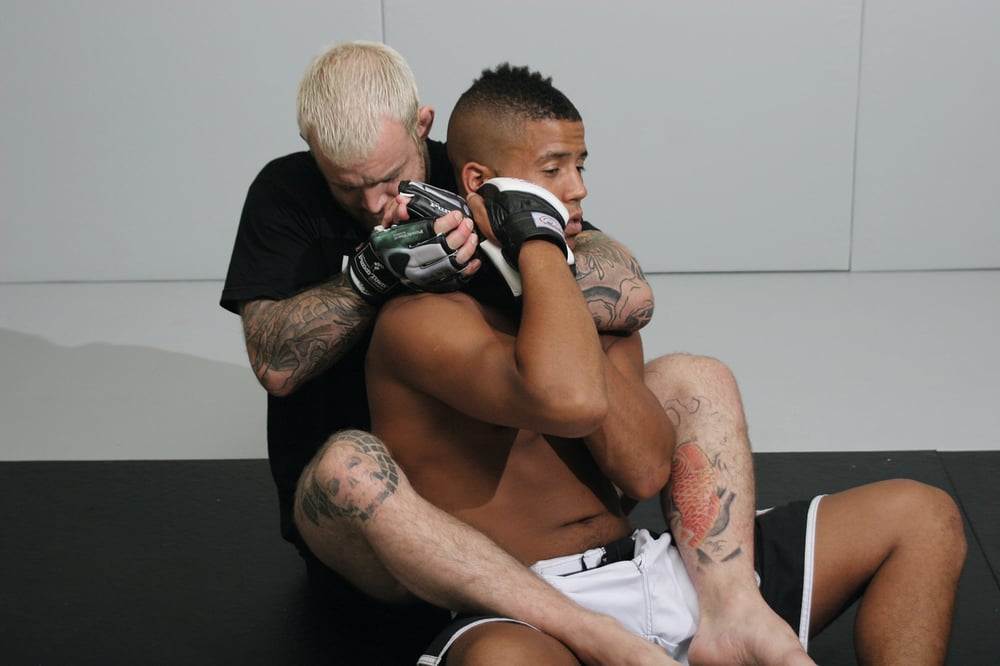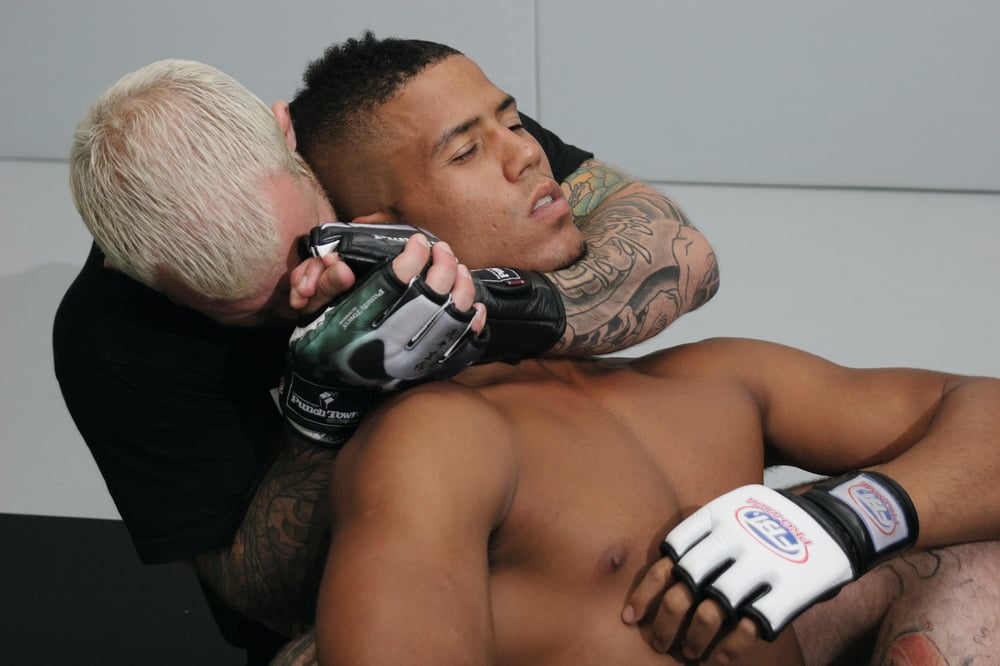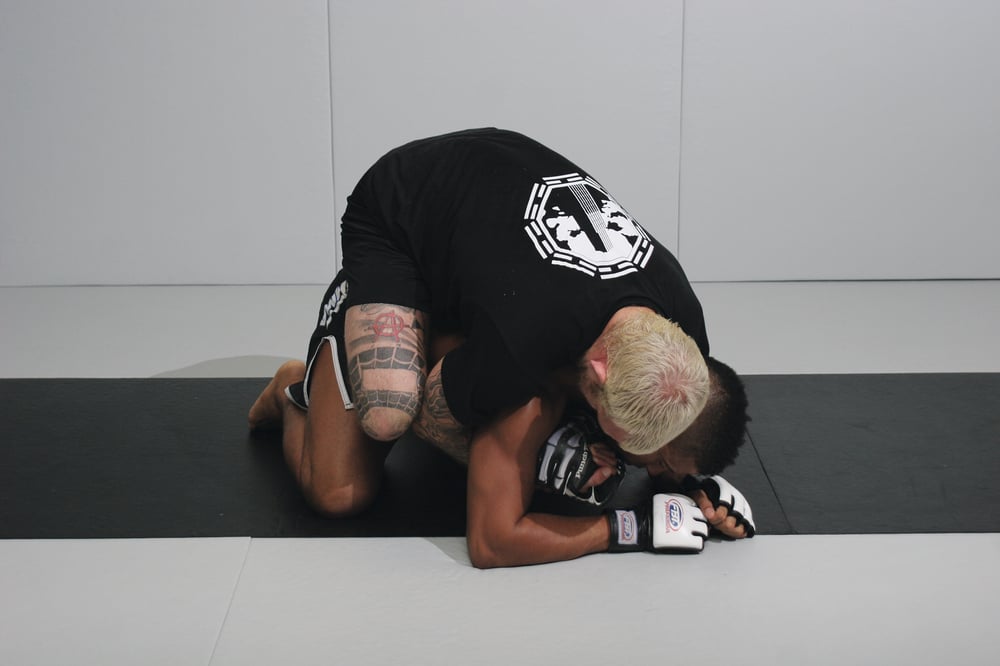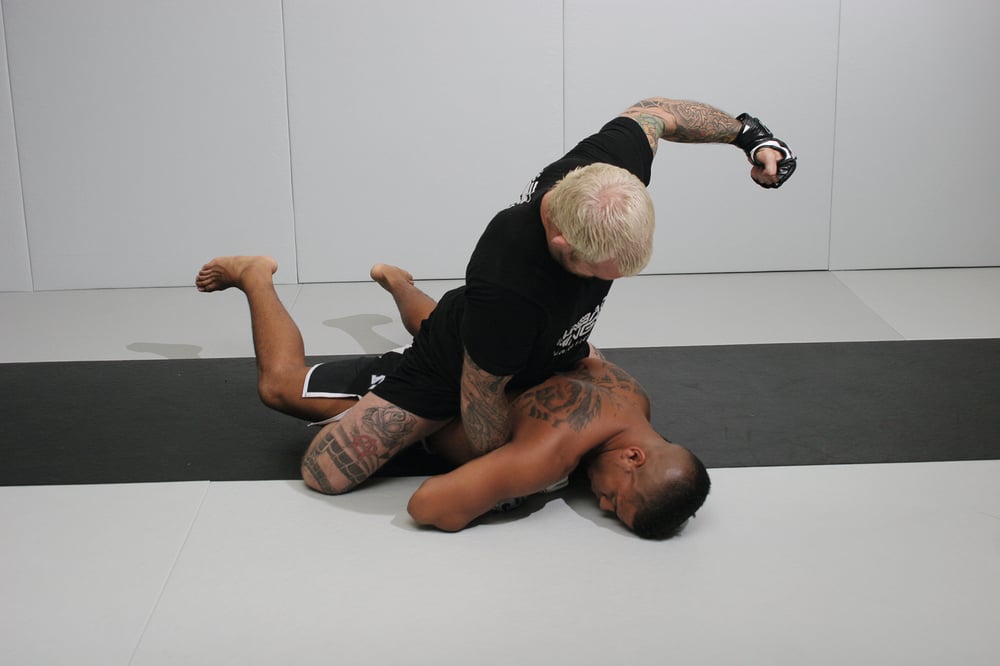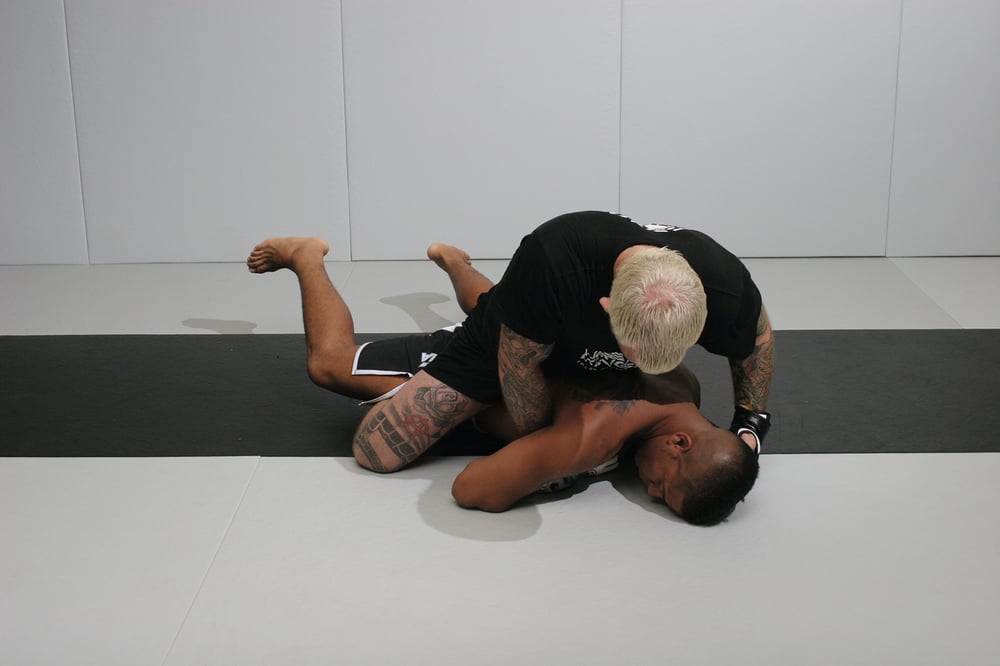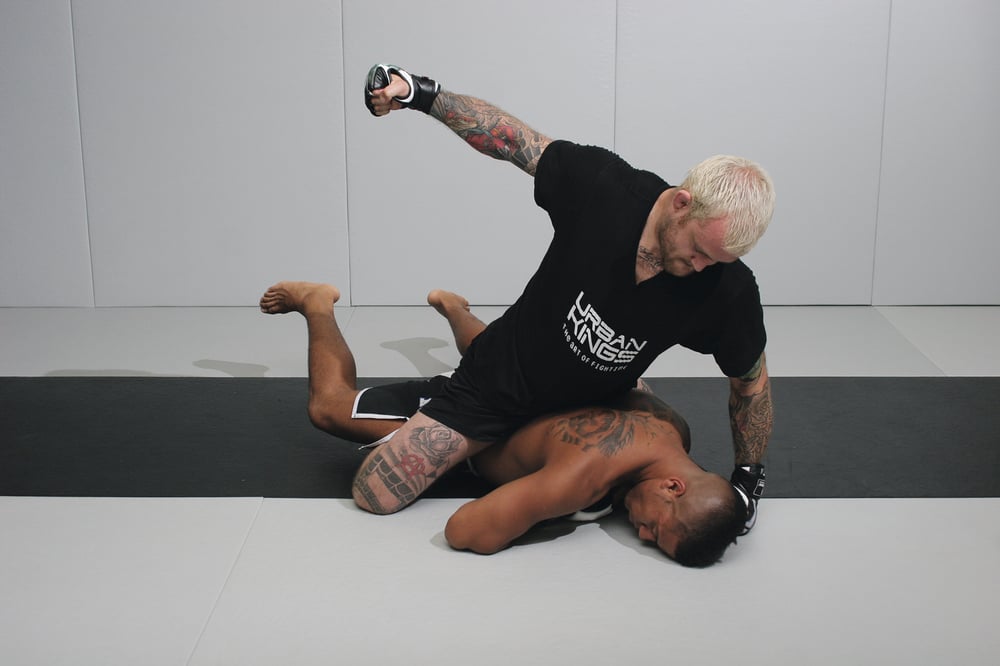
Issue 074
April 2011
Peter Irving is a professional welterweight fighter and Fighters Only’s resident fight expert for the last three years. Irving has fought in Europe and the USA and coaches fighters in London.
There aren’t many positions in MMA more effective than taking an opponent’s back. The two distinct forms of back control are ‘face up’ and ‘face down’. With both of these a choke is the classic finish – the mata leao or ‘lion killer’, also known as the rear naked choke – being first choice. The short choke, using a gable grip to apply forearm pressure onto an opponent’s windpipe, is typically the second attack in the sequence should the rear naked choke be difficult to apply.
Chest-Back Alignment (see image 1)
The ideal control position is to have your chest lined up with their back, sternum parallel with sternum. In the case of face-down control, if you’re riding high you’ll be prone to being shucked over the top. Riding high in face-up control will mean you have difficulty reaching the choke and preventing your opponent from turning into you.
Grip (see image 1)
A body lock from double underhooks is an excellent way to maintain chest-to-back alignment, but makes it obvious that you’re about to attempt a choke. An over-under grip, or ‘harness’ is a good way to set up the choke and maintain chest-back alignment.
Hooks (see image 1)
Basic back control requires two ‘hooks’ – clipping your feet inside your opponent’s legs – placed in. Scoring in BJJ requires two hooks in to demonstrate control, but advanced back control can use only one hook, or neither. When both hooks are in, be careful not to cross your feet in the middle as you can leave yourself susceptible to a leglock.
FACE-UP BACK CONTROL: MATA LEAO AND SHORT CHOKE
1 Pete (black shirt) has Jason’s back with a harness hold.
2 Pete anchors his ‘over’ hand on Jason’s shoulder and ties off the wrist to prevent Jason from hand fighting.
3 Pete slips his under hand out.
4 Pete opens out his anchored hand and crosses his palms. It’s important not to pass the hand in front of Jason’s face or Jason will grab and control Pete’s wrist thus preventing execution of the rear naked choke.
5 Pete pinches his hands behind Jason’s head, squeezing his elbows together. Even if Jason’s chin is tucked Pete can still apply the mata leao, choking Jason out or dislocating his jaw.
6 If Jason successfully defends the rear naked choke, Pete switches to a gable grip.
7 Pete forces his elbow onto Jason’s shoulder and crushes his windpipe with his forearm to finish the short choke.
FACE-DOWN BACK CONTROL: BREAKDOWN AND STRIKES
Once an opponent is flattened out he’s essentially helpless. He may continue to defend choke attempts, but he’s completely vulnerable to strikes. Just look at how Matt Hughes decimated the legendary Royce Gracie at UFC 60.
1 Pete has Jason’s back and is facing down. Pete is using both arms under with a body lock to prevent him being shucked over the top.
2 Pete grabs wrist control and pulls it to collapse Jason’s arm. Simultaneously Pete forces his hips down, flattening Jason out.
3 Jason is defending the choke by keeping Pete’s arm trapped in, so Pete cocks his other hand back for a big punch.
4 As Pete lands the big left he frees his right hand.
5 Pete continues to deliver big hook punches on either side, until Jason is out or the ref steps in.



